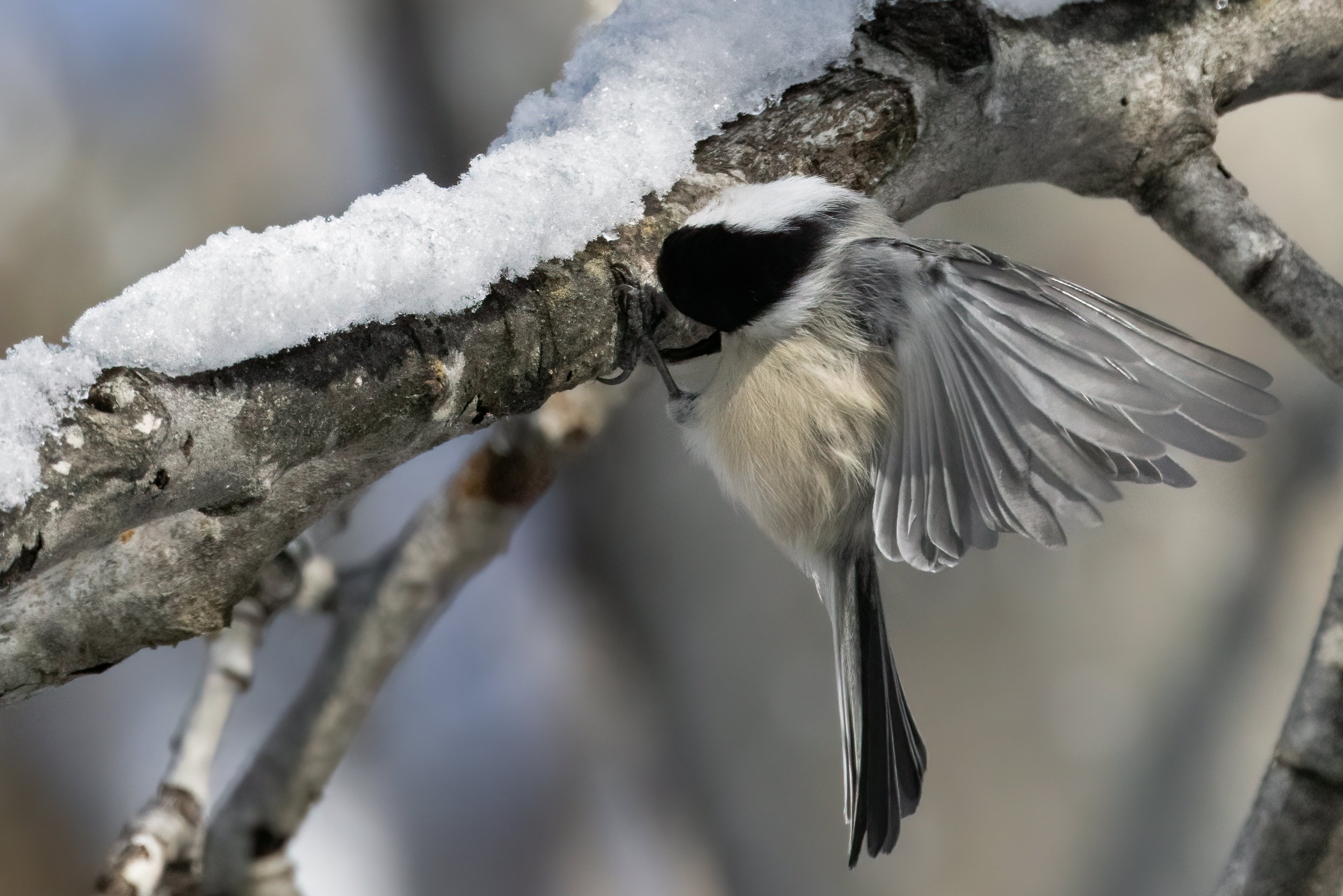Northern Cardinal Donna Donahue/Audubon Photography Awards
The bright colors of summer are long gone, the buzz of fall migration has ended, and the sandhill cranes have already passed overhead. As midwest winter settles in, and those warm, sunny days become fewer and farther between, Midwesterners (feathered or not) have to develop a certain grit to get through the harsh winter. Each winter I gain more respect for those select few who stick it out through the frigid wind and ice. I've found that trudging through unfavorable weather has helped me form a much deeper appreciation for birds that would otherwise be an everyday occurrence. When I’m out there bundled in every jacket and layer I own, watching a group of tiny birds jump around looking for food or geese sitting on the freezing water just seems so much more impressive.
Black-capped Chickadee
Anita Shepperd/Audubon Photography Awards
Some may feel as though winter birdwatching is lackluster in comparison to spring or fall, in the absence of all the migrating species and their flashy colors or interesting songs. But, it actually may be a perfect time for other beginners to develop and practice their bird identification skills.
Once the spark is there, it's a great time to hone in on those identification skills. During the coldest months many bird species head south to warmer climates, so generally, there are less birds to worry about in comparison to spring or fall. An aspiring birdwatcher won't need to wade through as many options in their field guide. New birders can use these helpful guides for winter species: Merlin App, Cornell Lab, Peterson Field Guide.
It may be too cold to take a swim, but check the water! There are plenty of waterfowl still taking full advantage of freezing lakes, rivers, and ponds. If you normally spend your time wading through tall grasses or wooded areas, try focusing your attention on waterfowl. It’s the perfect time of year to look for different types of ducks, geese, and swans. If you are curious how these birds can spend all day standing on ice or in freezing water - you can find your answer here.
Once the trees and shrubs lose their leaves, it’s much easier to spot those puffy birds on bare branches. You can see tons of sparrows, chickadees, juncos, and cardinals putting on some extra winter layers. Birds have much less to hide behind, so you may even have a better chance of spotting different hawks, and even the occasional owl.
With that said, if leaving your house in the snow still sounds dreadful, you can also start bird watching from the comfort of your home. In the absence of flowers, seeds, and budding leaves, birds will be looking for any food they can get. This makes it a great time to set up a bird feeder or make bird-friendly food at home.
““The wonderful purity of nature at this season is a most pleasing fact. Every decayed stump and moss-grown stone and rail, and the dead leaves of autumn, are concealed by a clean napkin of snow. In the bare fields and tinkling woods, see what virtue survives. In the coldest and bleakest places, the warmest charities still maintain a foothold.” ”
Dark-eyed Juncos
Shirley Donald/Audubon Photography Awards
For further reading:
https://www.birdnote.org/listen/shows/welcoming-back-winter-birds
https://www.cbc.ca/radio/quirks/breathing-spreads-the-flu-what-happens-if-we-stop-geoengineering-your-eyes-are-pointing-your-eardrums-1.4502554/how-do-ducks-keep-their-feet-from-freezing-in-cold-water-1.4502616
https://www.nature.org/en-us/about-us/where-we-work/priority-landscapes/great-lakes/stories-in-the-great-lakes/winter-birds/



